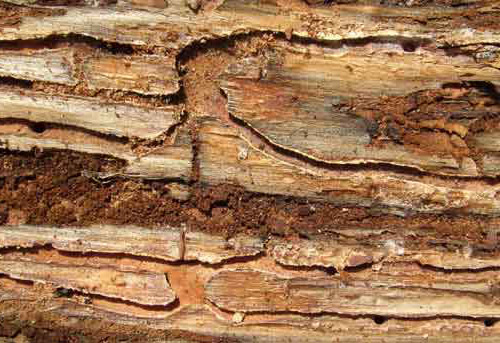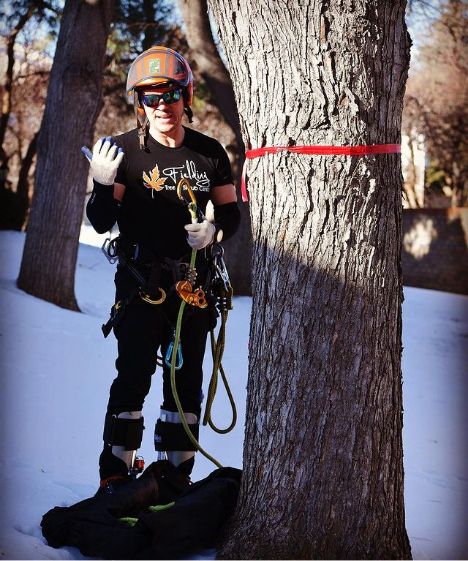Certain environmental conditions, such as prolonged drought and creation of freshly cut timber, have made the trees vulnerable to a formidable pest known as the IPS beetle. Key tree species are currently under attack and it will take Denver residents prioritizing IPS beetle treatment to save them.
An alarming update from the Colorado State Forest Service Insect Series publication warns that there is a significant IPS beetle population increase. Some Colorado counties are witnessing the beetles kill hundreds of healthy trees in a single year!
Want to enjoy the beautiful Denver outdoors for many more years to come? Then keep reading so you know how to do your part! Act in solidarity with your community and protect your trees by learning more about these beetles and your options for IPS Beetle treatment. With the support of expert tree care in Denver, you can take the right steps to keep your landscape healthy and thriving.
Meet the IPS Beetle
IPS Beetles, also known as an engraver beetle, are dark, reddish-brown or black colored and feed on the phloem of wood. They mark and carve the wood as they feed, hence the name engraver beetle. Only about 1/8 to 3/8 in long, they are small as individual insects.
Interestingly, IPS beetles attack with discretion and are known to go after native species. Some of their favorite species to eat include:
- Blue Spruce
- Englemann Spruce
- Ponderosa Pine
- Pinyon Pine
- Concolor/Noble Fir
- Subalpine Fir
Due to the population explosion in the Denver Metro area, the IPS Beetle have been found attacking other pine trees as well, including popular Austrian and Scotch species.
If you are unsure of which tree species you have on your property, contact a certified arborist for a free consultation.
Truly, the growing number of IPS beetles in Denver is concerning. Presently, there are eleven species native to the area. IPS beetles are spreading more rapidly than other pests because they can withstand the cold winter temperatures and have 2-4 generations per year. The beetles are active from early March all the way through November.
Signs Your Trees are Affected by The IPS Beetle
Here are some telltale signs and symptoms you can look for.
- Early fading on the top or whole tree in the spring, during the summer, late summer, or early fall. Fading will be rapid.
- Exit holes that are small and round in the trunk of the tree may reveal that the IPS Beetle has moved on, either to a different part of the tree, or another tree altogether.
- Reddish boring dust at the base of the tree or on the bark crevices can usually be spotted. Visible during the warmer months.
- Look for a beetle path under the bark (though be careful not to wound your tree in the process). Paths made by IPS beetles are shaped in a “Y” or “H” pattern and are clear of sawdust.
- Woodpecker feeding marks on the main trunk of the tree and large branches.
- Pitch tubes are generally not produced by the IPS beetle once it infests a tree. . If pitch-tubes are produced they are usually very small and covered with cinnamon-colored boring dust.
Occasionally, the symptoms of IPS tree infection are not always clear, and can easily be confused with signs of other bugs and wildlife. We don’t recommend leaving things with a question mark. For the best IPS Beetle treatment, you need accurate information. Consult with a certified arborist when in doubt.
IPS Beetle Treatment Options
The best case scenario is that the IPS beetle has not gotten to your trees yet. The IPS beetle preys on trees that are weak and cannot defend themselves against attack. Subsequently, through a series of proactive IPS beetle treatments, you can strengthen your trees’ defensive systems. The first line of defense is the overall health of a tree. They will be able to fight off the IPS beetle and other pests when they are properly cared for, healthy, and thriving.
1. Preventative Pruning
Preventative pruning helps trees grow and form a sustainable structure. Pruning in both young and mature trees helps to strengthen the tree’s overall form. Removing dead and diseased limbs increases access to sunlight and stimulates healthy tree growth. Incorrect or haphazard pruning can damage your tree, so proceed with caution! Effective preventative pruning include:
- Remove larger accumulated deadwood
- Raising the tree’s skirt for improved air flow
- Repairing storm damages
2. Fertilization
Think of fertilizer as an immunization or booster shot for trees. It juices them with the nutrients they need that may not always be readily available in their habitat.
Fertilization via soil injection can help to improve the trees growing environment, ultimately leading to a healthier tree. We recommend consistent, ongoing fertilization twice per year (spring and fall) to ensure your tree is receiving the nutrients and soil improvements it deserves.
3. Consistent Watering
Prolonged drought is one of the leading causes of IPS beetle infestation right now. One of the simplest things you can do to bolster the health of your trees is to give them adequate water! Consider these tips:
- Like all trees, urban evergreens (in particular spruce and pines) require supplemental water during the growing season.
- As a general rule of thumb, provide 2 gallons of water for each diameter inch of the tree trunk. For example, a four-inch diameter tree should get 8 gallons per watering. To measure, use a ruler on the base of the tree at knee height.
- Watering the lawn is not enough! Turf is far more efficient at water-uptake than tree roots. Trees cannot compete with your grass for water.
4. Trunk Injection
The Fielding Tree Care experts use a trunk injection to apply insecticide that provides control of the IPS beetle for two years. Injection is applied in March or April for optimal success, though we do offer treatments all year long. Trunk injection of pesticide is very effective, but only if the tree has not been infested. It is generally for preventative purposes only (though high-dose applications can prevent further infestation). Other considerations:
- Two years of coverage yields considerably high success rate
- Skirt of canopy of tree must be raised to at least 4 feet for injection application
5. Canopy/Trunk Spray
A second option for beetle control is a bi-annual application of topical insecticide made to the trees’ trunk and major scaffold branches. Since IPS beetle has a relatively long period of activity, it is recommended to spray twice a year, in early spring and late summer. While this option is not as effective as trunk injection, it may be more appropriate if you have either high volumes of conifers that need protection, or smaller trees that do not meet our minimum diameter requirements for injection.
6. Soil Injection
We employ a growth regulator via soil injection that regulates tree canopy growth. Used by arborists as a final step in the pruning process, a growth regulator can effectively extend time between pruning, increase fine root production, and improve safety. A growth regulator application will also improve drought and heat resistance, and help trees build a higher tolerance to certain diseases. Other considerations include:
- Improving growth and stress regulation of canopy
- Allocation of resources to defense systems
- Up to 3 years of coverage possible
- Skirt of canopy of tree must be raised to at least 2 feet for injection application
More Tips for IPS Beetle Treatment Success
Here are a few more suggestions from the Colorado State Forest Service on IPS Beetle treatment. You can also check out their poster all about the IPS beetle.
- Improving tree vigor of individual trees through preventative strategies is the best way to keep the IPS beetles away.
- Stack recently cut trees or unseasoned firewood far away from living trees. This is the IPS beetle’s dream breeding spot. And they could attack and kill nearby evergreen trees.
- Similarly, haul away slash piles as quickly as possible. Do not place slash piles near living trees. IPS beetles are also attracted to slash piles.
Ask Fielding Tree Care to Remove IPS Beetle
Fighting pest infestation isn’t easy. It takes time and money, but the return on investment is great. Taking a proactive approach to tree care is your best course of action for protecting your beautiful trees and those all around your city. Being on the lookout and spotting symptoms early are key to prevention.
Our team of certified arborists is the best resource for determining the most appropriate solutions. Contact us for a free assessment of your trees.






